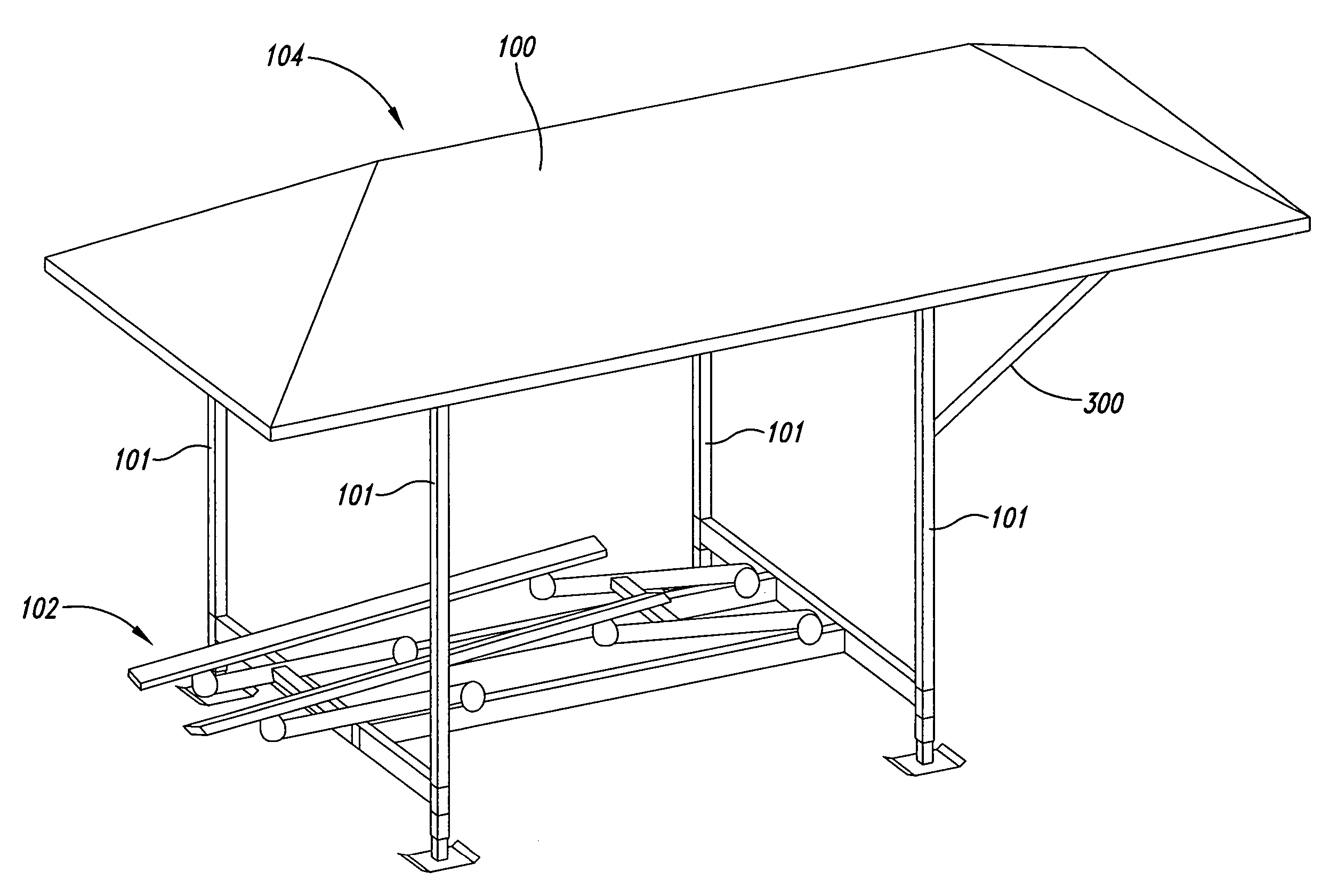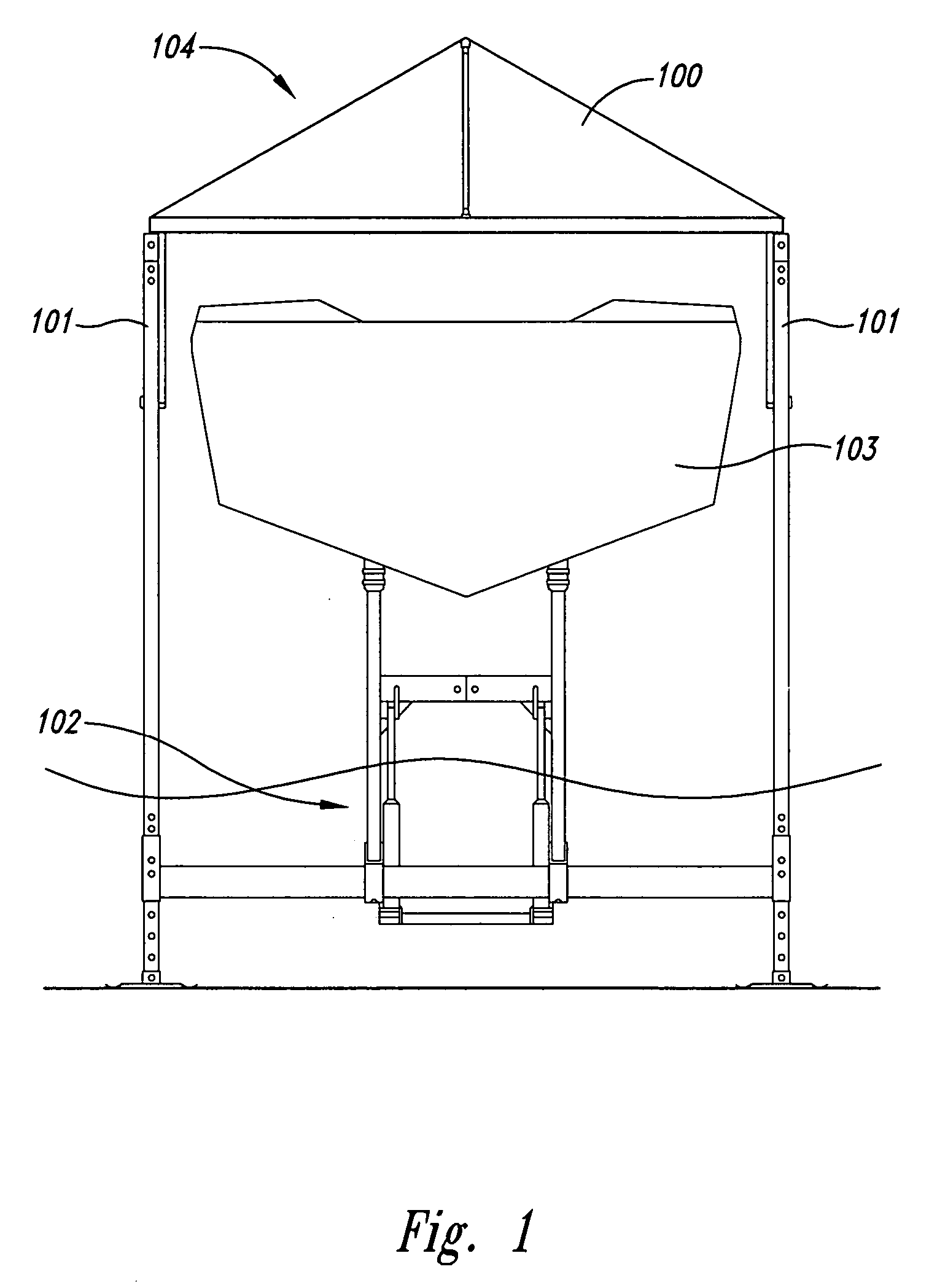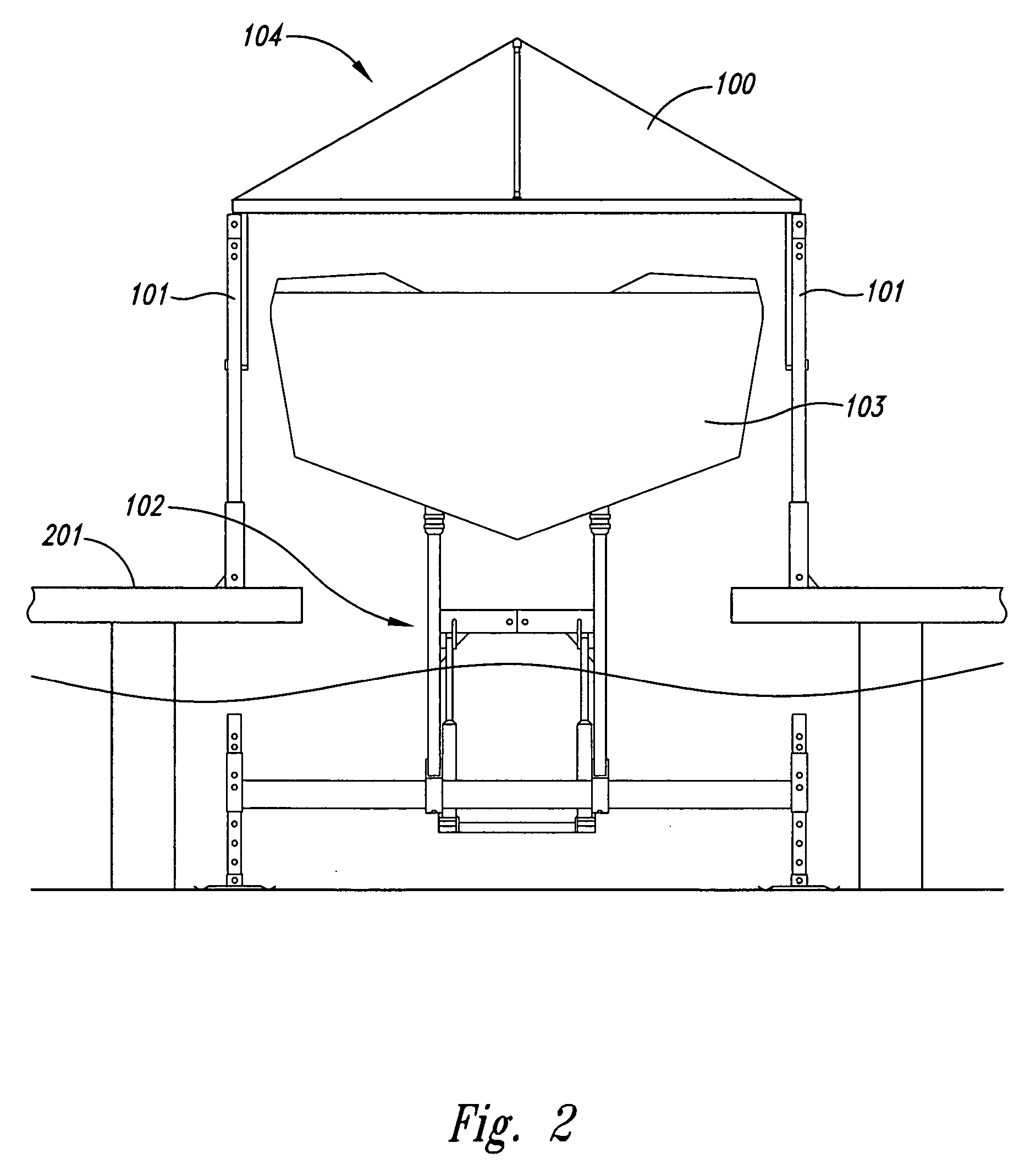Watercraft canopy
a watercraft and canopy technology, applied in the field of watercraft canopy, can solve the problems of affecting the safety of watercraft, so as to avoid adverse environmental effects on marine vegetation and reduce the deterioration of marine environmen
- Summary
- Abstract
- Description
- Claims
- Application Information
AI Technical Summary
Benefits of technology
Problems solved by technology
Method used
Image
Examples
Embodiment Construction
[0021] This section illustrates aspects of the invention, and points out certain preferred embodiments of these aspects. This section is not intended to be exhaustive, but rather to inform and teach the person of skill in the art who will come to appreciate more fully other aspects, equivalents, and possibilities presented by the invention, and hence the scope of the invention as set forth in the claims, which alone limit its scope.
[0022]FIG. 1 shows one embodiment of a watercraft canopy 104 according to the present invention, which includes a thin, flexible, substantially translucent cover 100. The watercraft canopy 104 allows a substantial amount of sunlight to pass through the canopy 104 while also providing protection of a subject watercraft 103 therebelow from the elements. The flexible, substantially translucent cover 100 is positioned between the sun and the watercraft 103 to provide protection from the elements. The cover 100, made rigid or semi-rigid by an interior framewo...
PUM
 Login to View More
Login to View More Abstract
Description
Claims
Application Information
 Login to View More
Login to View More - R&D
- Intellectual Property
- Life Sciences
- Materials
- Tech Scout
- Unparalleled Data Quality
- Higher Quality Content
- 60% Fewer Hallucinations
Browse by: Latest US Patents, China's latest patents, Technical Efficacy Thesaurus, Application Domain, Technology Topic, Popular Technical Reports.
© 2025 PatSnap. All rights reserved.Legal|Privacy policy|Modern Slavery Act Transparency Statement|Sitemap|About US| Contact US: help@patsnap.com



